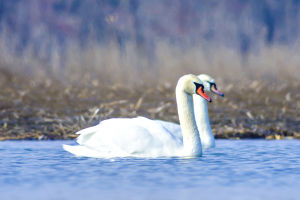Foxes are fascinating creatures that play an important role in the ecosystem. They are widely distributed carnivores that inhabit temperate and boreal regions of Asia, Europe, North America, and Africa.
There are several species of foxes, such as the red fox, arctic fox, and sand fox, which differ in size, coat color, and habits. Foxes are adaptable animals that can survive in different climates and terrains, displaying a wide range of different species, coat colors, and habits.
Foxes are found in a variety of environments such as forests, grasslands, semi-deserts, and hilly areas, living in tree holes or earthen caves.
They are nocturnal or emerge both day and night, making them difficult to spot. Foxes are intelligent and alert animals with a good sense of sight and smell, and can quickly spot and hide from enemies.
They also have a strong sense of territory and will mark their range with urine or droppings.
Foxes possess an omnivorous diet, consuming a variety of prey such as mice, rabbits, birds, fish, and insects, alongside wild fruits. Their remarkable adaptability enables them to locate appropriate food sources across diverse seasons and geographical regions.
As a pivotal predator, foxes fulfill a crucial role in ecosystem dynamics by regulating and balancing populations within the food chain. Their predation effectively controls the numbers of rodents, insects, and other pests, thereby preserving the equilibrium and stability of the ecosystem.
Typically, foxes engage in mating during the winter months, with births occurring in the spring, yielding litters of three to seven cubs. After birth, the female foxes take on the responsibility of nurturing the pups, who start venturing out of the den to discover the world beyond after 6 to 8 weeks.
Upon reaching the age of about 10 months, the young foxes attain sexual maturity, embarking on the quest to establish their territories and find suitable mates.
Despite their significance, many people do not understand the importance of fox conservation.
Protecting foxes is crucial for preserving biodiversity, which provides humans with a rich and diverse range of production and living necessities, a healthy and safe ecological environment, and a unique and distinctive landscape culture.
Therefore, various measures are needed to protect the fox.
Firstly, it is necessary to strengthen laws and regulations to prohibit illegal hunting, trafficking, and consumption of foxes.
Secondly, it is crucial to establish and improve the nature reserve system and delineate and expand key protection areas.
Thirdly, it is important to strengthen scientific monitoring and assessment to grasp the distribution and changing trends of fox resources.
Lastly, carrying out popular science education and social publicity to raise public awareness of protecting the fox and its habitat is essential.
In conclusion, foxes are an important part of biodiversity, reflecting the richness and beauty of the natural world.
Protecting foxes is not only about preserving a particular species but also about maintaining a stable and healthy ecosystem. It is the responsibility of all humans to protect and preserve these fascinating creatures and the habitats they live in.


